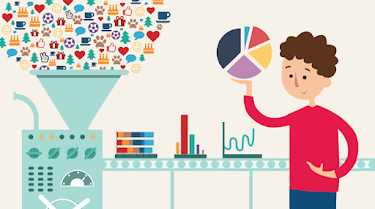Data cleaning and preprocessing are crucial steps in the data analysis workflow. These steps ensure that the data is in the best possible shape for analysis and modeling. Here's an overview of the processes involved:
Here are Some Key Feature of Data Cleaning:
1. Data Cleaning
Handling Missing Values:
- Removal: Eliminate rows or columns with missing values if they are few and not critical.
- Imputation: Fill missing values using mean, median, mode, or more sophisticated methods like KNN or regression.
Dealing with Outliers:
- Detection: Use methods like Z-score, IQR, or visualizations (box plots, scatter plots).
- Treatment: Remove, cap, transform, or use algorithms that are robust to outliers.
Correcting Inconsistencies:
- Standardization: Ensure consistency in data formats (e.g., date formats, categorical labels).
- Validation: Check for and correct inconsistencies in data entries (e.g., duplicate records, invalid values).
2. Data Preprocessing
Encoding Categorical Variables:
- Label Encoding: Convert categorical labels to numeric values.
- One-Hot Encoding: Create binary columns for each category level.
Feature Scaling:
- Normalization: Scale features to a range, typically [0, 1].
- Standardization: Scale features to have mean 0 and variance 1.
Feature Engineering:
- Creation: Generate new features from existing data.
- Transformation: Apply mathematical transformations to features.
- Selection: Choose the most relevant features using methods like correlation analysis, feature importance from models, or dimensionality reduction techniques (PCA, LDA).
Handling Imbalanced Data:
- Resampling: Use techniques like oversampling (SMOTE) or undersampling.
- Algorithm Adjustment: Use algorithms that handle imbalance, like balanced class weights in SVMs or decision trees.
3. Data Integration and Transformation
Merging Data:
- Combine datasets from different sources based on a common key.
Aggregation:
- Summarize data at different levels of granularity (e.g., weekly, monthly aggregates).
Pivoting:
- Reshape data from long to wide format or vice versa.
Datetime Transformation:
- Extract meaningful features from datetime columns (e.g., year, month, day, hour).
Tools and Libraries
- Python Libraries: Pandas, NumPy, Scikit-learn
- R Packages: dplyr, tidyr, caret
- Other Tools: SQL for database operations, Excel for simple cleaning tasks
Would you like detailed examples or code snippets for any of these steps?












No comments:
Post a Comment